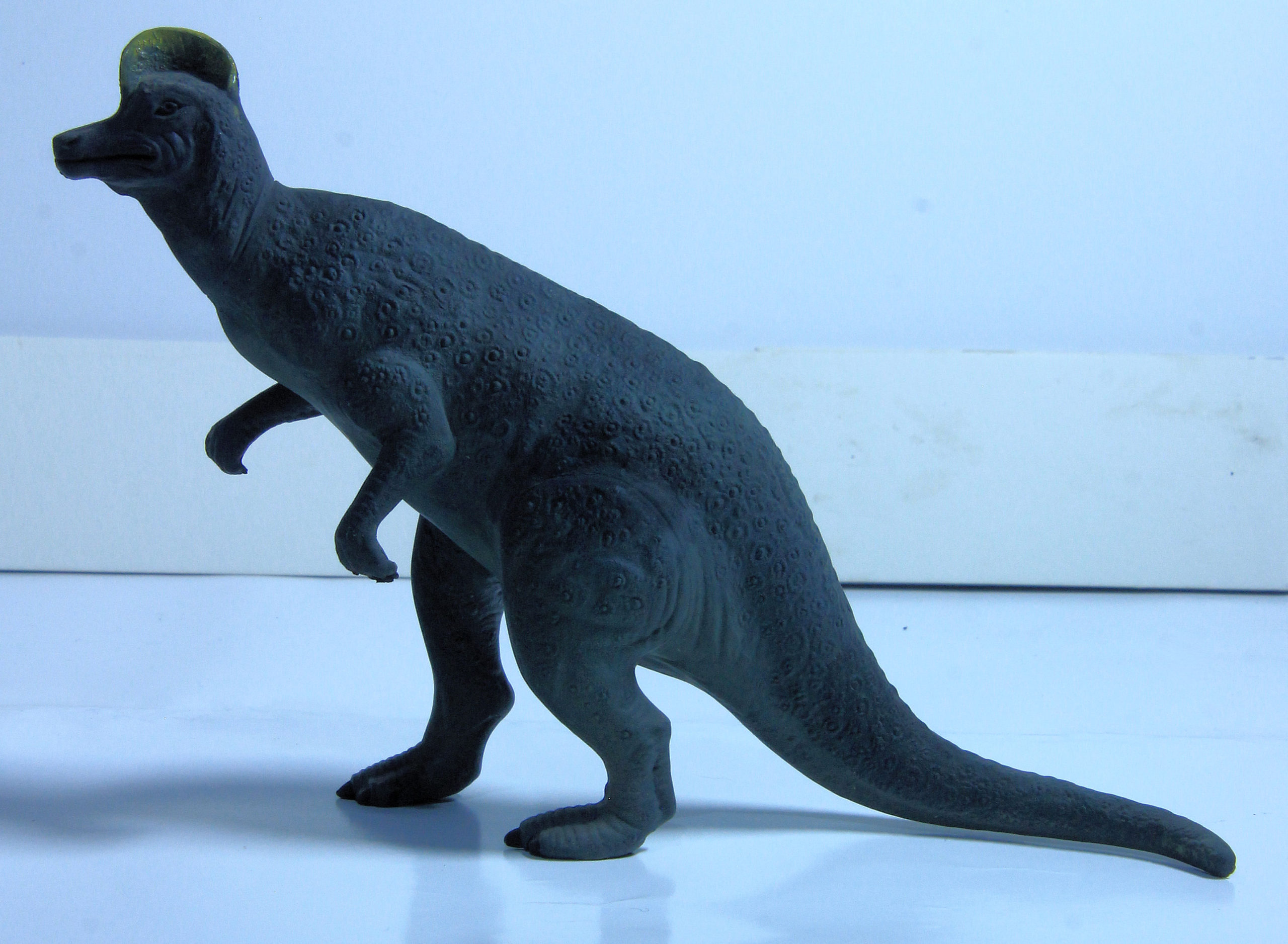Corythosaurus Scale Model by Lindberg
Corythosaurus is a genus of hadrosaurid “duck-billed” dinosaur from the Upper Cretaceous Period, about 77–75.7 million years ago. It lived in what is now North America. Its name means “helmet lizard”, derived from Greek. It was named and described in 1914 by Barnum Brown. Corythosaurus is now thought to be a lambeosaurine, related to Nipponosaurus, Velafrons, Hypacrosaurus, and Olorotitan. Corythosaurus has an estimated length of 9 metres (30 ft), and has a skull, including the crest, that is 70.8 centimetres (27.9 in) tall.
Corythosaurus is known from many complete specimens, including the nearly complete holotype found by Brown in 1911. The holotype skeleton is only missing the last section of the tail, and part of the forelimbs, but was preserved with impressions of polygonal scales. Corythosaurus is known from many skulls with tall crests. The crests resemble the crests of the cassowary and a Corinthian helmet. The most likely function of the crest is thought to be vocalization. As in a trombone, sound waves would travel through many chambers in the crest, and then get amplified when Corythosaurus exhaled. A Corythosaurus specimen has been preserved with its last meal in its chest cavity. Inside the cavity were remains of conifer needles, seeds, twigs, and fruits: Corythosaurus probably fed on all of these.
The two species of Corythosaurus are both present in slightly different levels of the Dinosaur Park Formation. Both still co-existed with theropods and other ornithischians, like Daspletosaurus, Brachylophosaurus, Parasaurolophus, Scolosaurus, and Chasmosaurus.

Hadrosaurus / Corythosaurus Scale Model by Lindberg 
Hadrosaurus / Corythosaurus Scale Model by Lindberg 
Hadrosaurus / Corythosaurus Scale Model by Lindberg 
Hadrosaurus / Corythosaurus Scale Model by Lindberg 
Hadrosaurus / Corythosaurus Scale Model by Lindberg 
Hadrosaurus / Corythosaurus Scale Model by Lindberg 
Hadrosaurus / Corythosaurus Scale Model by Lindberg 
Hadrosaurus / Corythosaurus Scale Model by Lindberg 
Hadrosaurus / Corythosaurus Scale Model by Lindberg Box Art
